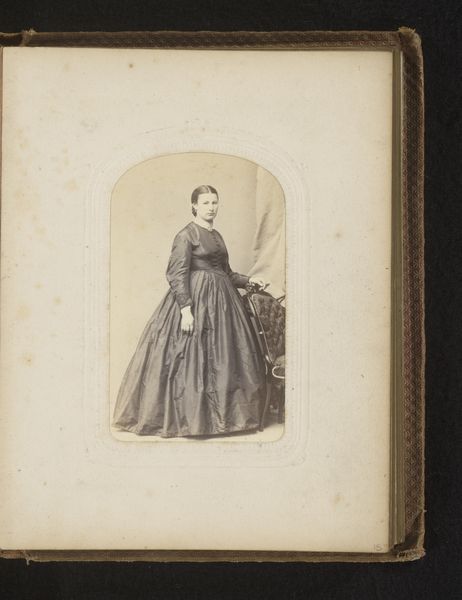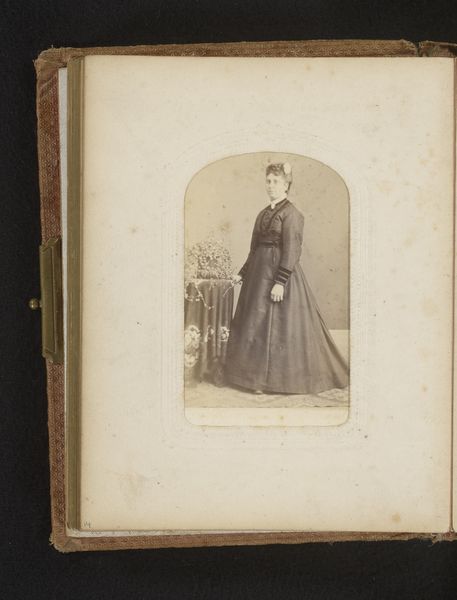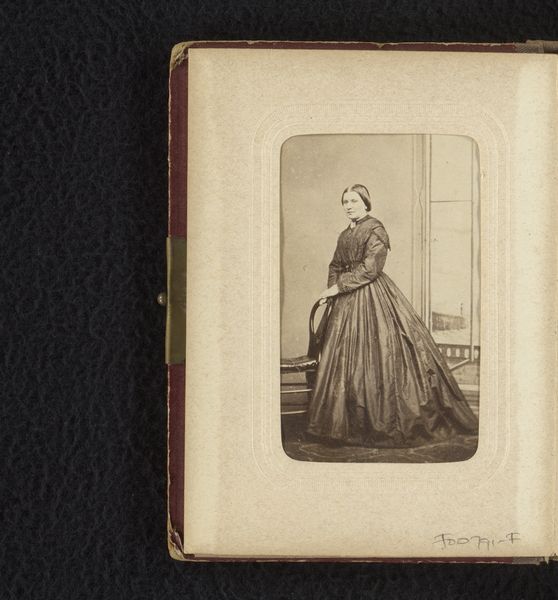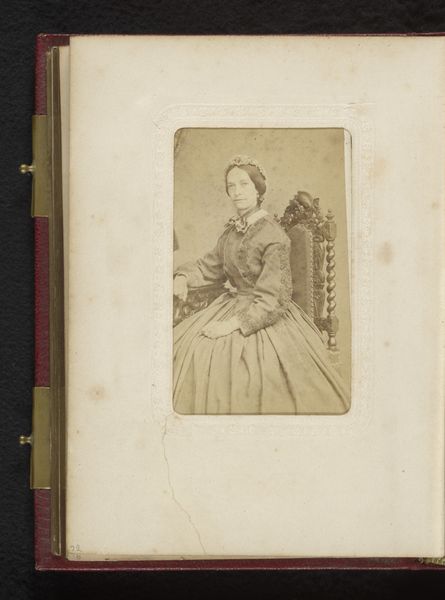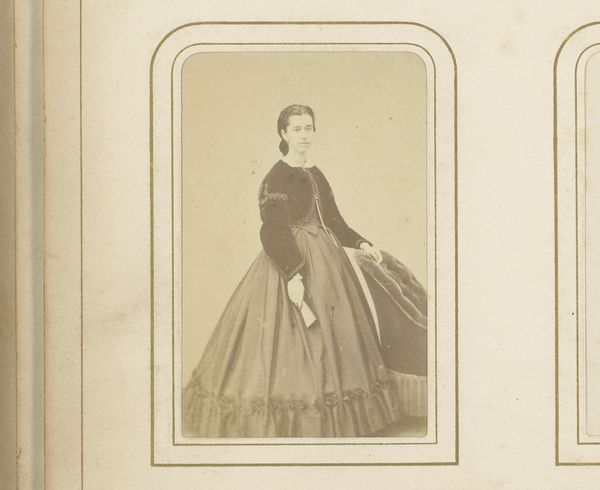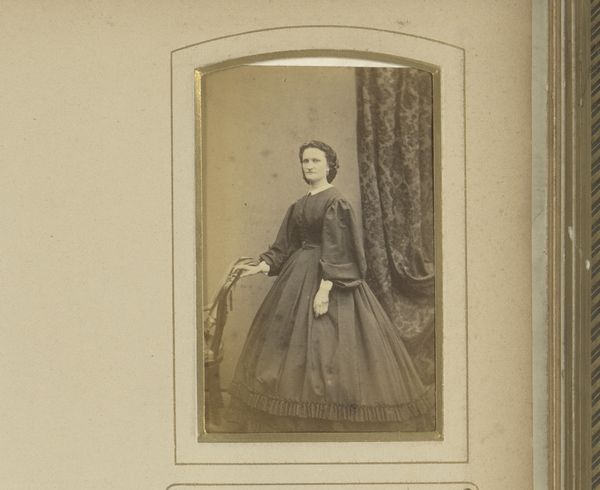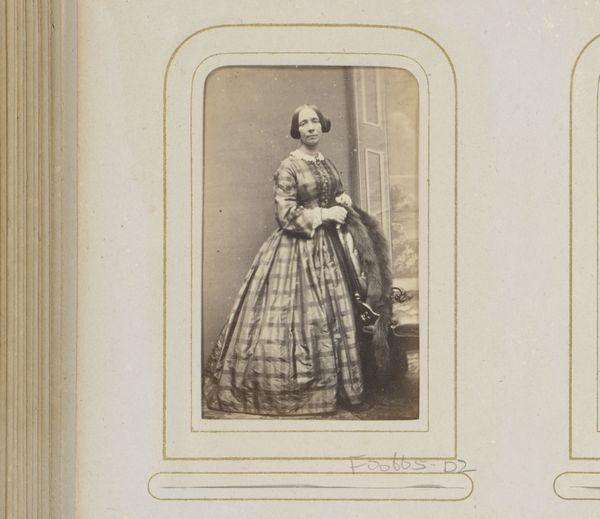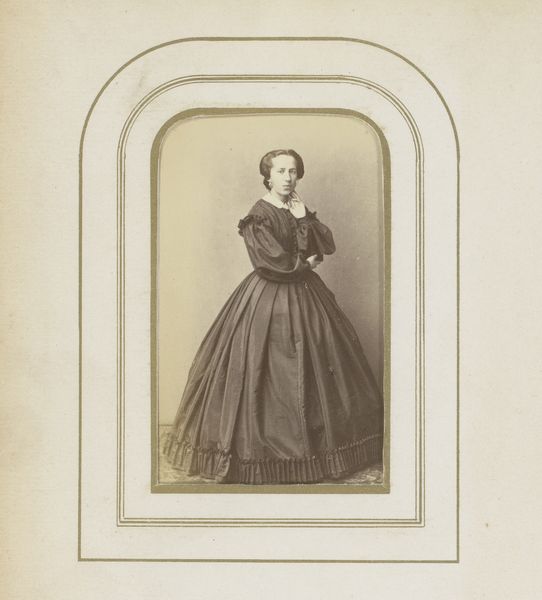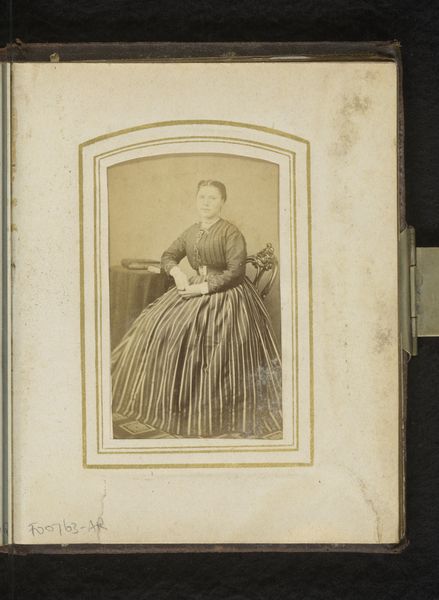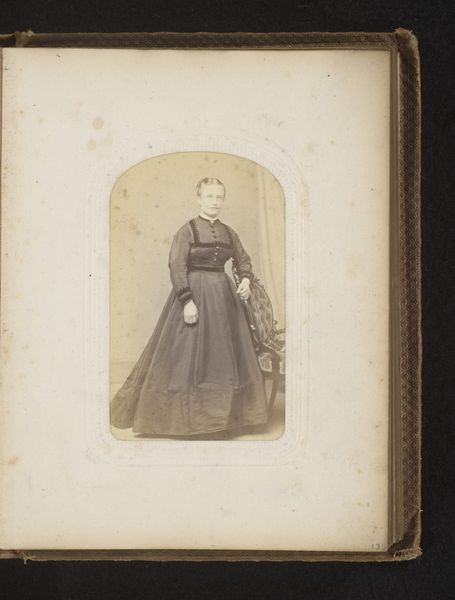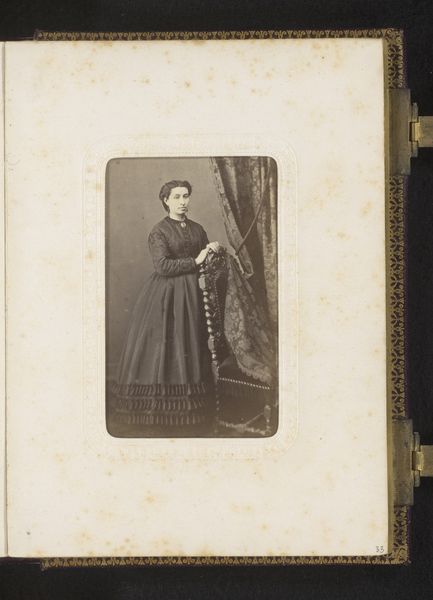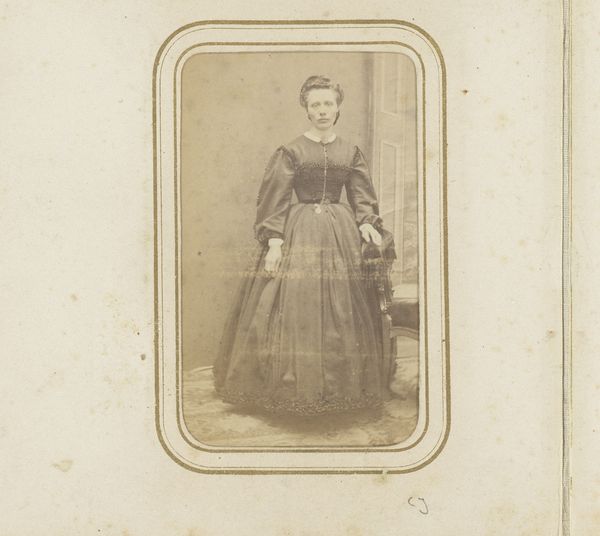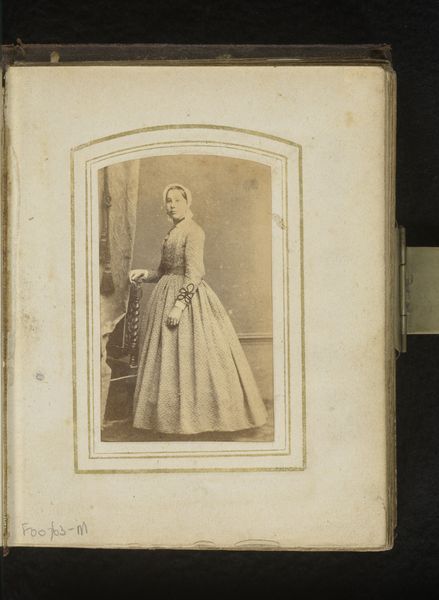
print, photography, albumen-print
#
portrait
# print
#
photography
#
coloured pencil
#
pen and pencil
#
albumen-print
Dimensions: height 83 mm, width 51 mm
Copyright: Rijks Museum: Open Domain
Curator: This is an albumen print entitled "Portret van een vrouw, staand bij een balustrade," placing its creation somewhere between 1860 and 1900. The photographer is listed as Christian Dannhof. What's your initial response to this image? Editor: A feeling of composed melancholy. There’s a certain stillness in the subject's pose and gaze, but her fashionable dress gives off subtle airs of constrained expression. It's interesting how the details of her attire speak to certain societal pressures and expectations placed on women of that era. Curator: The choice of dress, indeed, can be seen as both a signifier of status and a symbolic constraint. Plaid in particular, during this period, carried associations with specific social strata and even political affiliations. But let’s think about that balustrade. What visual narratives does it activate? Editor: It's a fascinating motif. Balustrades are typically architectural elements designed to create both physical and visual boundaries. In this case, I see it as representing the boundaries within which women were expected to operate in that era. Curator: Exactly! The woman's hand rests on the balustrade as if she’s a guardian, yet simultaneously confined. It sparks conversations about gender roles, and perhaps her personal negotiation with societal expectations. Editor: Also note her expression. It's not overtly sorrowful, but there’s a palpable lack of joy. This photo really makes me wonder about the symbolism of plaid and other materials for marginalized communities or social strata. It carries complex connotations—almost a uniform, and even today signals class tensions or specific social affiliations. Curator: Indeed, the power dynamics and the cultural messages inherent in these symbols are quite profound, don't you think? The study of portraiture is such fertile ground for critical dialogue around identity, history, and representation. Editor: I agree wholeheartedly. Seeing these subtle symbols, though, invites us to connect past to present in terms of enduring hierarchies. A simple piece evokes profound questions of memory. Curator: It also encourages us to examine how similar symbolic languages function in our current world and political dialogues, as we attempt to build our more equitable futures. Editor: Precisely, prompting introspection on cycles and their lingering impact across decades. A powerful reminder.
Comments
No comments
Be the first to comment and join the conversation on the ultimate creative platform.
